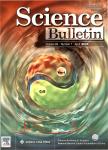Forced response of atmospheric oscillations during the last millennium simulated by a climate system model
Forced response of atmospheric oscillations during the last millennium simulated by a climate system model作者机构:The State Key Latoratory of Numerical Modeling for Atmospheric Sciences and Geophysical Fluid Dynamics Institute of Atmospheric Physics Chinese Academy of Sciences Beijing 100029 China Graduate University of Chinese Academy of Sciences Beijing 100029 China
出 版 物:《Chinese Science Bulletin》 (Chinese Science Bulletin)
年 卷 期:2011年第56卷第28期
页 面:3042-3052页
核心收录:
学科分类:12[管理学] 1201[管理学-管理科学与工程(可授管理学、工学学位)] 07[理学] 070601[理学-气象学] 0706[理学-大气科学]
基 金:the National Natural Science Foundation of China (40890054) the National Key Technology R&D Program of China (2007BAC29B03)
主 题:数据模型 大气振荡 模拟 强迫响应 气候系统 太平洋年代际振荡 中世纪暖期 硫酸盐气溶胶
摘 要:Variations in global atmospheric oscillations during the last millennium are simulated using the climate system model FGOALS_gl. The model was driven by reconstructions of both natural forcing (solar variability and volcanic aerosol) and anthropogenic forcing (greenhouse gases and sulfate aerosol). The model results are compared against proxy reconstruction data. The reconstructed North Atlantic Oscillation (NAO) was out of phase with the Pacific Decadal Oscillation (PDO) in the last millennium. During the Medieval Warm Period (MWP), the NAO was strong while the PDO was weak. During the Little Ice Age (LIA), the NAO was weak while the PDO was strong. A La Ni a-like state prevailed in the MWP, while an El Ni o-like state dominated in the LIA. This phenomenon is particularly obvious in the 15th, 17th and 19th centuries. Analysis of the model output indicates that the NAO was generally positive during 1000-1400 AD and negative during 1650-1900 AD. There is a discrepancy between the sim- ulation and reconstruction during 1400-1650 AD. The simulated PDO generally varies in parallel with the reconstruction, which has a negative phase during the MWP and a positive phase during the LIA. The correlation coefficient between the reconstruction and simulation is 0.61, and the correlation is statistically significant at the 1% level. Neither the La Ni a-like state of the MWP nor the El Ni o-like state of the LIA is reproduced in the model. Both the reconstructed and the simulated Antarctic Oscillations had a negative phase in the early period of the last millennium and a positive phase in the late period of the last millennium. The Asian-Pacific Oscillation was generally strong during the WMP and weak during the LIA, and the correlation coefficient between the simulation and reconstruction is 0.50 for the period 1000 -1985 AD. The analysis suggests that the specified external forcings significantly affected the evolution of atmospheric oscillation during the last millennium.



